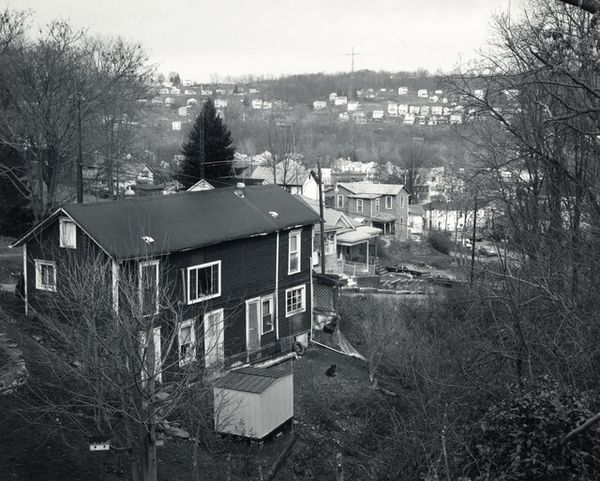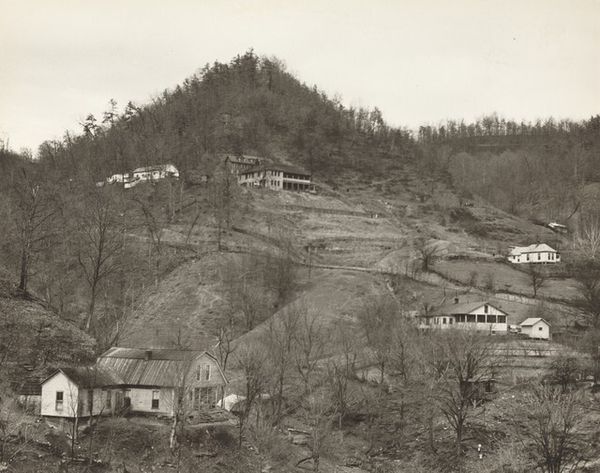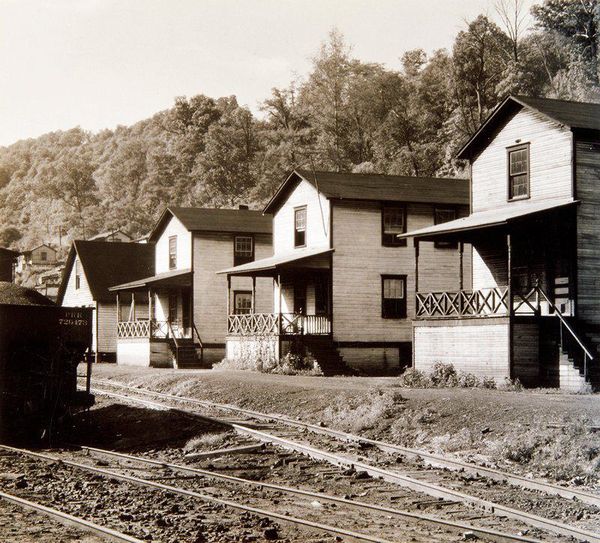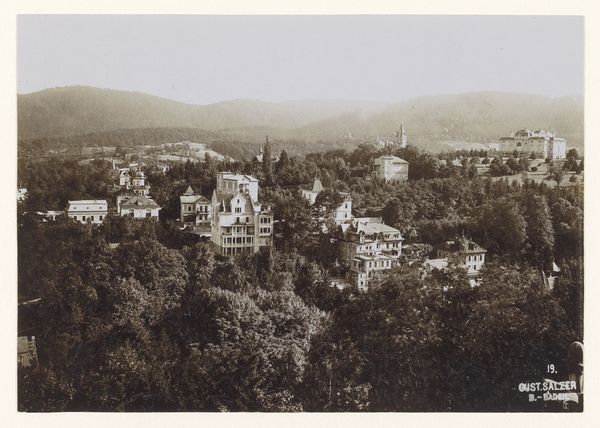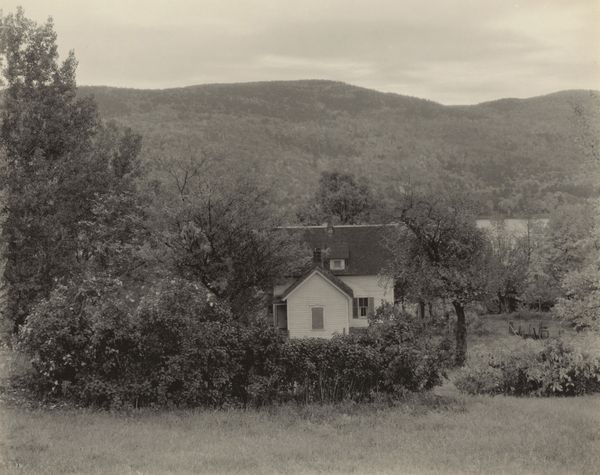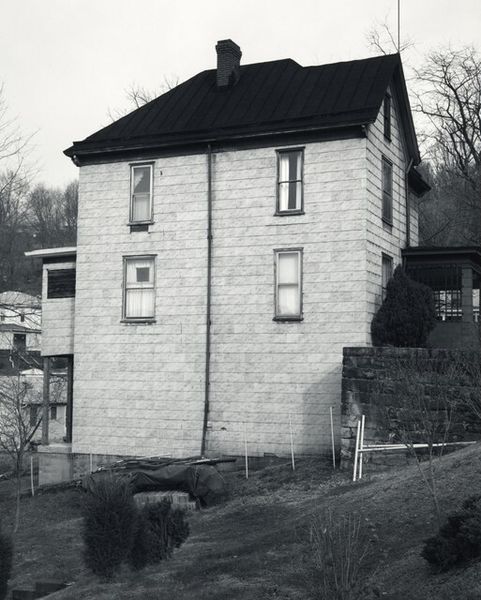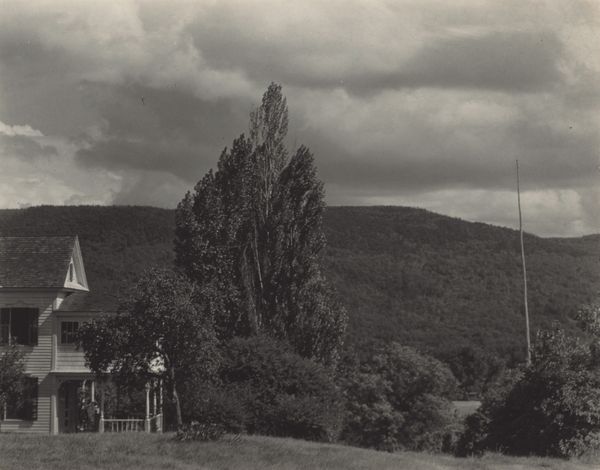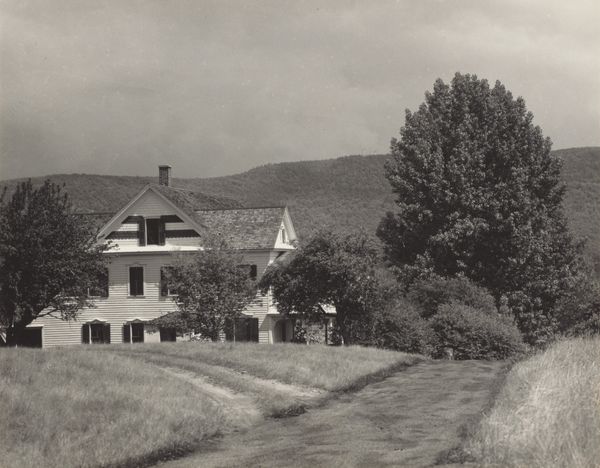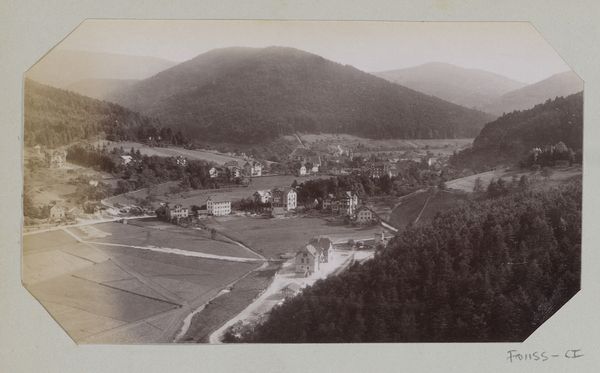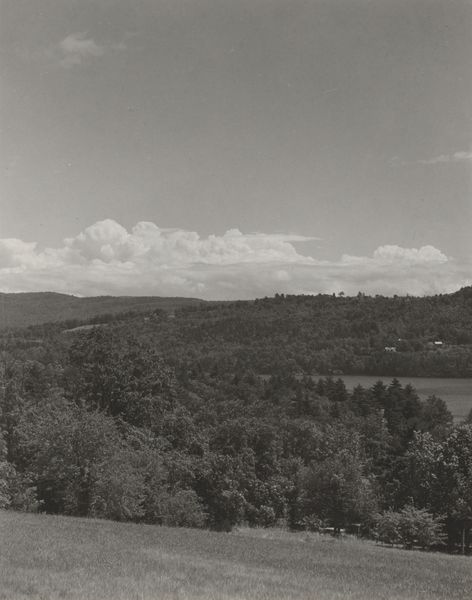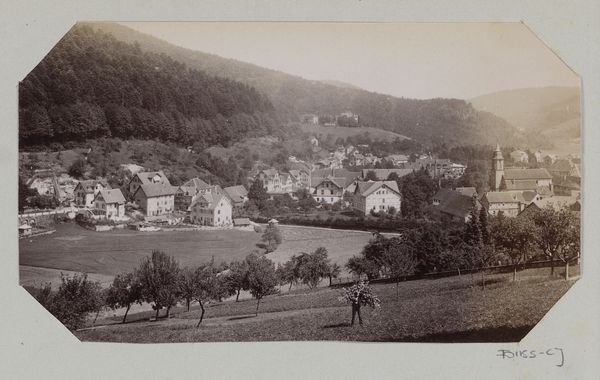
photography, gelatin-silver-print
#
landscape
#
photography
#
gelatin-silver-print
#
cityscape
Dimensions: image: 23.5 × 29.3 cm (9 1/4 × 11 9/16 in.) sheet: 27.7 × 35.6 cm (10 7/8 × 14 in.)
Copyright: National Gallery of Art: CC0 1.0
Curator: This is "Point Marion, Pennsylvania," a photograph by James Welling, created in 1993, rendered in gelatin silver print. It captures a specific location in the U.S. in black and white. What strikes you about this composition? Editor: Initially, it feels rather somber. The black and white tones emphasize a certain stillness and isolation within the scene. The high vantage point looking down upon the small town feels almost detached. Curator: Welling is very interested in place and the passage of time and its relation to industry. If you look closely at the bridge structure, this photograph really invites an exploration into the socio-economic undercurrents in small-town America at that moment in time. Especially concerning industrial infrastructures and their impact on community identity. Editor: I see your point. Bridges often symbolize connection and progress, yet here, there’s almost a feeling of abandonment, isn't it? Are there suggestions of the consequences of industrial change visible elsewhere? Curator: Absolutely. Think about the composition. Welling places the domestic sphere—the homes and gardens—foregrounded, yet diminished beneath both the natural world and this imposing bridge. It asks questions about the dominance of human-made environments and infrastructures, both celebrating it, but also maybe asking about its human cost. It's powerful, but maybe oppressive? Editor: Oppressive might be too strong a word for the tone here, I think. There is a quiet dignity as well, especially within the small details in the photograph. The bare branches, the rooftops...they have their own stark, stoic appeal. I can see this photograph serving as a historical record for a particular place and time, but also as an exploration into social commentary in relationship to industry and community. Curator: Right, these themes of preservation versus the inevitability of change also connect. The photographic medium itself—a capturing of a fleeting moment—becomes an active component of these dialogues between art, memory, and culture. Thank you, it is fascinating to reconsider in these terms. Editor: Indeed, it encourages an intersectional approach into place and space and time! Thank you.
Comments
No comments
Be the first to comment and join the conversation on the ultimate creative platform.
